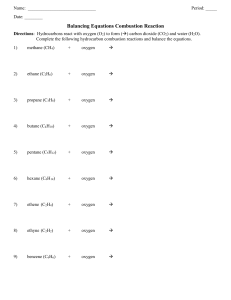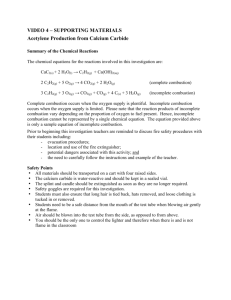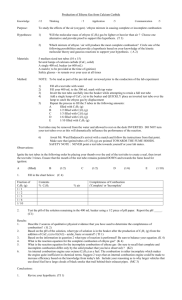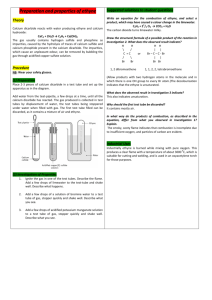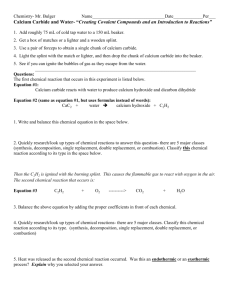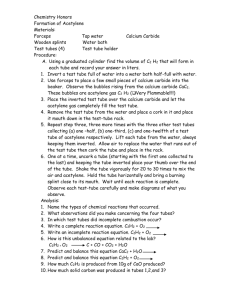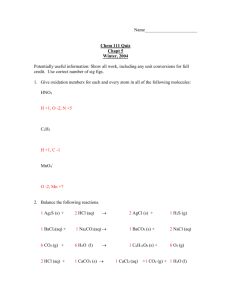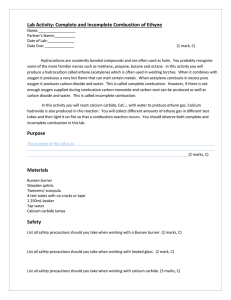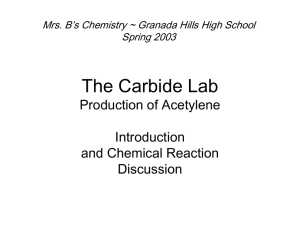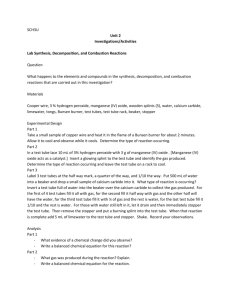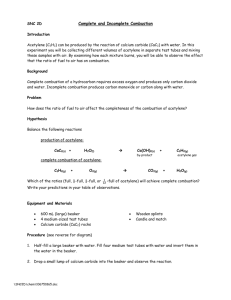Combustion Reactions of Acetylene
advertisement
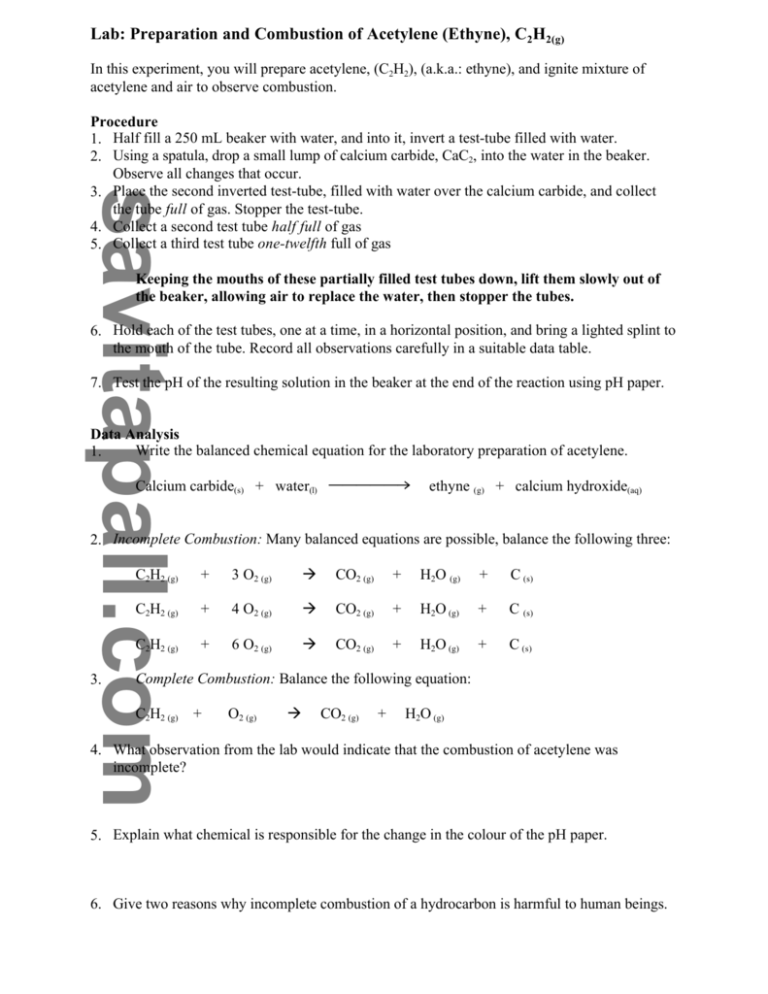
Lab: Preparation and Combustion of Acetylene (Ethyne), C2H2(g) In this experiment, you will prepare acetylene, (C2H2), (a.k.a.: ethyne), and ignite mixture of acetylene and air to observe combustion. Procedure 1. Half fill a 250 mL beaker with water, and into it, invert a test-tube filled with water. 2. Using a spatula, drop a small lump of calcium carbide, CaC2, into the water in the beaker. Observe all changes that occur. 3. Place the second inverted test-tube, filled with water over the calcium carbide, and collect the tube full of gas. Stopper the test-tube. 4. Collect a second test tube half full of gas 5. Collect a third test tube one-twelfth full of gas Keeping the mouths of these partially filled test tubes down, lift them slowly out of the beaker, allowing air to replace the water, then stopper the tubes. 6. Hold each of the test tubes, one at a time, in a horizontal position, and bring a lighted splint to the mouth of the tube. Record all observations carefully in a suitable data table. 7. Test the pH of the resulting solution in the beaker at the end of the reaction using pH paper. Data Analysis Write the balanced chemical equation for the laboratory preparation of acetylene. 1. Calcium carbide(s) + water(l) sssssd ethyne (g) + calcium hydroxide(aq) 2. Incomplete Combustion: Many balanced equations are possible, balance the following three: 3. C2H2 (g) + 3 O2 (g) à CO2 (g) + H2O (g) + C (s) C2H2 (g) + 4 O2 (g) à CO2 (g) + H2O (g) + C (s) C2H2 (g) + 6 O2 (g) à CO2 (g) + H2O (g) + C (s) Complete Combustion: Balance the following equation: C2H2 (g) + O2 (g) à CO2 (g) + H2O (g) 4. What observation from the lab would indicate that the combustion of acetylene was incomplete? 5. Explain what chemical is responsible for the change in the colour of the pH paper. 6. Give two reasons why incomplete combustion of a hydrocarbon is harmful to human beings.
